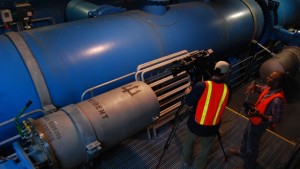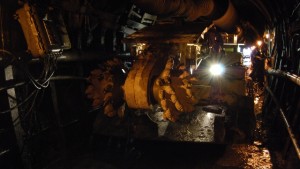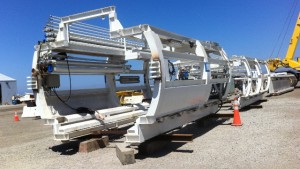In 2002, San Francisco voters passed a ballot measure that would more than double their water rates by 2016. Why? Because the majority of those voters felt that spending billions of dollars to seismically retrofit and upgrade their water system was worth such an investment, especially when that water, most of which originated as Sierra Nevada snow melt 167 miles to the east, crosses three active faults on its way to Bay Area faucets.
Long overdue for an upgrade, much of the Hetch Hetchy water delivery system was built in the 1920s and 1930s, with large swathes of pipelines made of riveted steel that don't perform well during big earthquakes. At a cost of $4.6 billion, paid for by 2.5 million residents in Alameda, Santa Clara, San Mateo and San Francisco counties who rely on a blend of Hetch Hetchy and local reservoir water, the San Francisco Public Utilities Commission has been installing new pipes and employing state-of-the-art engineering elements designed to withstand, for example, a magnitude 7.1 earthquake on the Hayward fault. Water storage capacity is also being expanded under the Hetch Hetchy Water System Improvement Program. When the program is completed in 2016, a new tunnel built 100 feet below the San Francisco Bay will carry a steel water pipeline 5 miles from the peninsula to the East Bay. The nearly 90 year-old, earthen Calaveras dam in southern Alameda county will also be replaced, allowing the adjacent reservoir to finally be filled to its original storage capacity of 31 billion gallons.

When I was assigned this story, I knew that it would be a challenge to describe key features of the Hetch Hetchy Water System Improvement Program while also explaining the controversial history of the creation of the Hetch Hetchy aqueduct after San Francisco officials received federal permission in 1913 to flood and dam Hetch Hetchy valley in Yosemite National Park. Fortunately, my job was made much easier thanks to the assistance provided by the San Francisco Public Utilities Commission to film the construction activities on several key projects and to interview members of their staff, including General Manager Ed Harrington and the director of the Hetch Hetchy Water System Improvement Program, Julie Labonte.
It also helped to find an eloquent historian, Gray Brechin at UC Berkeley, to share with me the colorful history of Hetch Hetchy. He used to work as a TV Producer at KQED in the '80s, so he knew the importance of delivering concise and engaging soundbites.
The earliest and most vocal champion for Hetch Hetchy water was San Francisco Mayor James Phelan, who served from 1897 to 1902. Mayor Phelan hired an official at the USGS who was willing to moonlight on Phelan's behalf and file water rights to stretches of the Tuolumne River which flows through the Hetch Hetchy valley. Other water sources such as the American River, Sacramento River and even Lake Tahoe were also considered, and while they would have been cheaper to divert for the bustling metropolis of San Francisco, they wouldn't provide the quality of drinking water passing through the Hetch Hetchy valley in Yosemite National Park. Even President Theodore Roosevelt, a pragmatic conservationist who had camped with John Muir in Yosemite and established five national parks during his presidency, sympathized with San Francisco's request for the Sierra water flowing through Hetch Hetchy.

